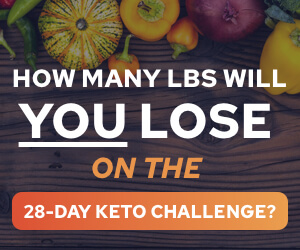In the realm of health and wellness, two popular dietary strategies have gained significant attention in recent years: intermittent fasting (IF) and the ketogenic diet (keto). While each approach offers unique benefits on its own, combining intermittent fasting with a...

The Complete Guide To The Keto Diet Benefits Risks and How To Get Started
The ketogenic diet, commonly known as the keto diet, has gained popularity for its potential health benefits and weight loss effects. In this comprehensive guide, we’ll delve into the details of the keto diet, explore its benefits, discuss potential risks, and provide practical tips on how to get started.
What Is the Keto Diet?
The keto diet is a low-carb, high-fat eating plan that aims to shift your body’s metabolism away from using carbohydrates as its primary energy source. Instead, it encourages your body to burn fat for fuel. Here are the basic rules:
- Carbohydrate Restriction: The keto diet drastically reduces carbohydrate intake, typically allowing only 10% or less of daily calories to come from carbs.
- Increased Fat Intake: To compensate for the reduced carbs, you’ll consume a higher proportion of healthy fats, making up around 70% of your daily calories.
- Moderate Protein: Protein intake remains moderate, constituting approximately 20% of your daily caloric intake.
Health Benefits of the Keto Diet
- Weight Loss: By promoting fat-burning and reducing hunger, the keto diet can lead to significant weight loss.
- Improved Blood Sugar Control: Ketosis helps stabilize blood sugar levels, making it beneficial for people with diabetes.
- Enhanced Mental Clarity: Some individuals report improved focus and cognitive function while in ketosis.
- Potential Benefits Against Diseases: Research suggests that the keto diet may have positive effects on conditions such as epilepsy, cancer, and Alzheimer’s disease.
Foods to Eat and Avoid
Foods to Include:
- Healthy Fats: Avocado, nuts, seeds, olive oil, coconut oil, and fatty fish.
- Low-Carb Vegetables: Spinach, kale, broccoli, cauliflower, zucchini, and bell peppers.
- Protein Sources: Eggs, poultry, fish, and grass-fed meats.
- Dairy: Full-fat cheese, yogurt, and butter.
Foods to Limit or Avoid:
- High-Carb Foods: Bread, pasta, rice, sugary snacks, and most fruits.
- Processed Foods: Avoid highly processed and sugary foods.
- Alcohol: Limit alcohol consumption due to its carb content.
Getting Started with Keto
- Calculate Macros: Determine your daily calorie needs and set your macronutrient ratios (fat, protein, and carbs).
- Plan Meals: Create a meal plan that aligns with keto principles.
- Stay Hydrated: Adequate water intake is crucial during ketosis.
- Monitor Ketone Levels: Use urine strips or a blood ketone meter to track ketosis.
- Be Patient: Adaptation to ketosis takes time; be patient with the process.
Potential Risks and Side Effects
- Keto Flu: Some people experience flu-like symptoms during the initial transition.
- Nutrient Deficiencies: Be mindful of potential deficiencies in vitamins and minerals.
- Long-Term Effects: More research is needed on the long-term impact of the keto diet.
Remember, the keto diet isn’t suitable for everyone. Consult a healthcare professional before starting any new diet, especially if you have underlying health conditions.
In summary, the keto diet offers promising benefits but requires commitment and proper guidance.
The Synergistic Power of Intermittent Fasting and Keto Diet
The Complete Guide To The Keto Diet Benefits Risks and How To Get Started
The ketogenic diet, commonly known as the keto diet, has gained popularity for its potential health benefits and weight loss effects. In this comprehensive guide, we’ll delve into the details of the keto diet, explore its benefits, discuss potential risks, and provide...
How to Start a Keto Diet Successfully
Embarking on a ketogenic journey can be a transformative experience for your health and well-being. If you've been pondering the question of "How to Start a Keto Diet," you're in the right place. Let's break down the essential steps to initiate your keto adventure and...










